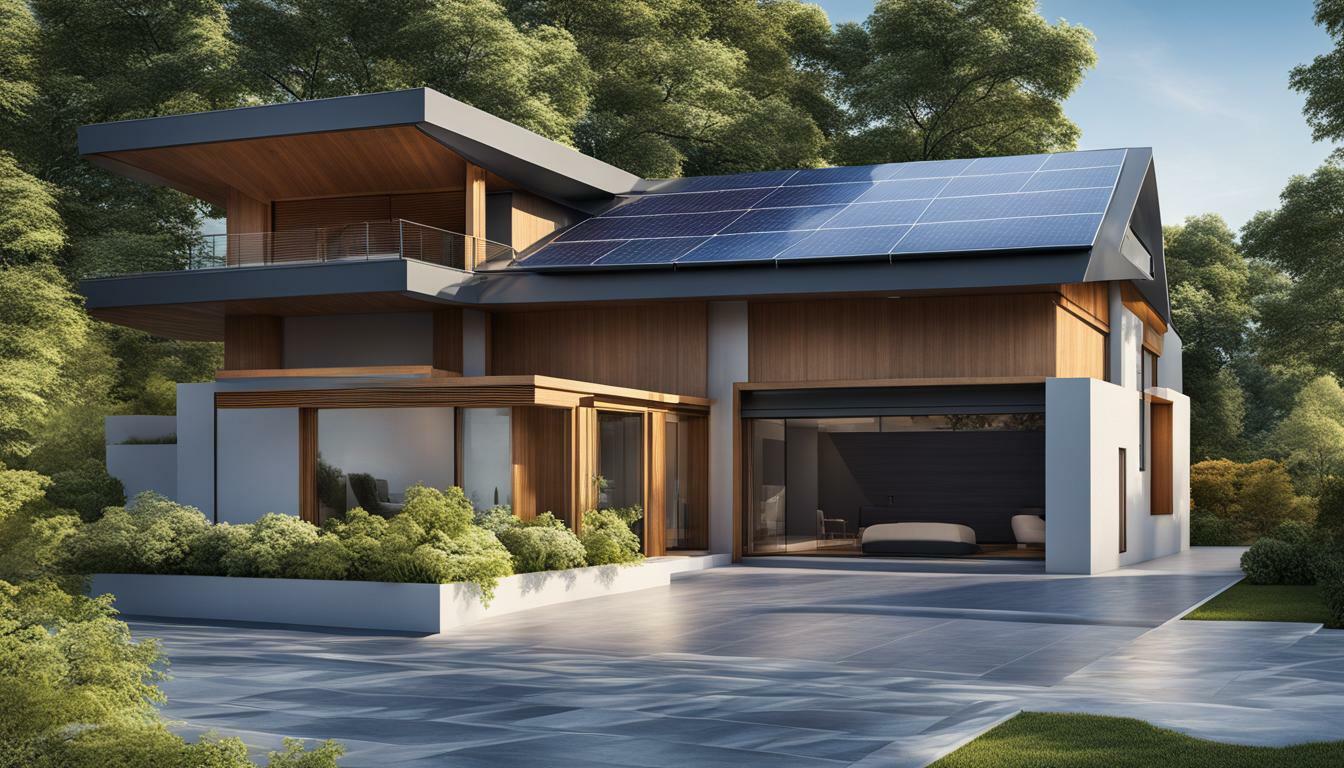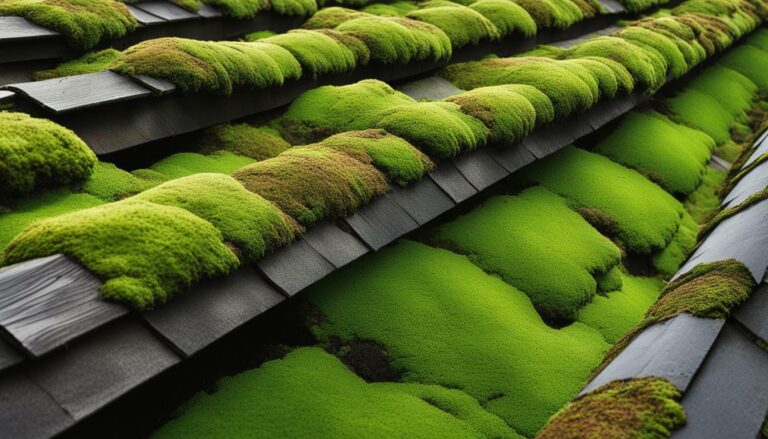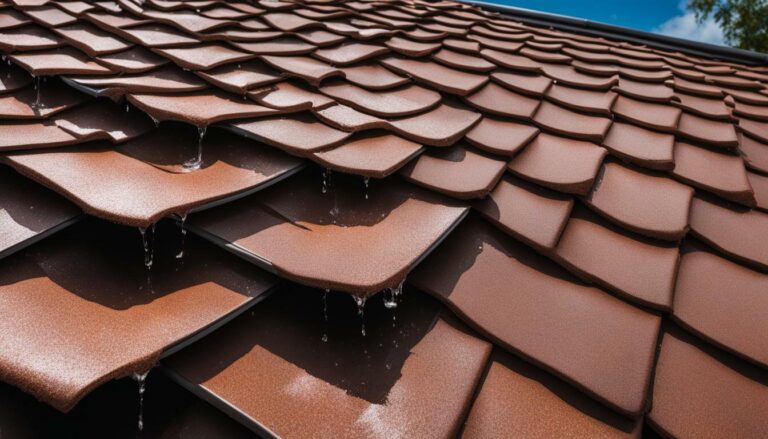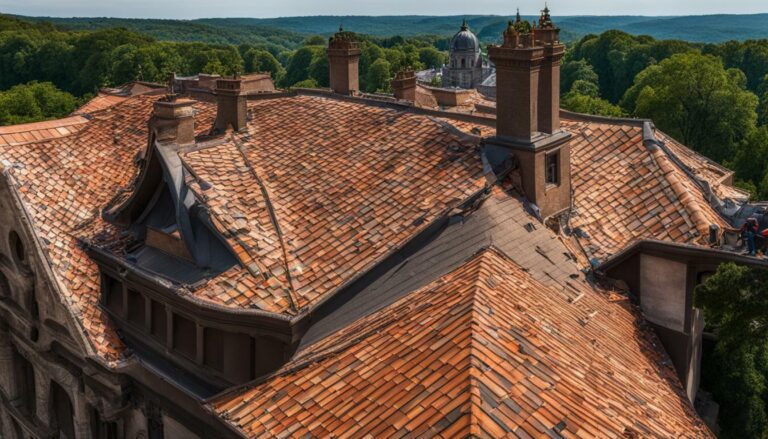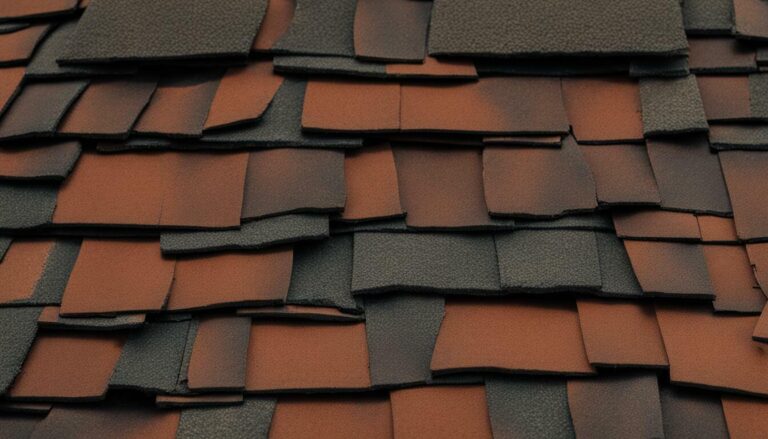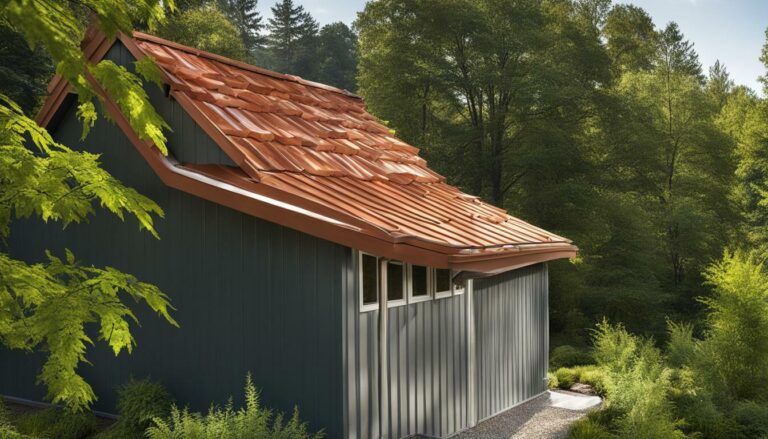Maximize Savings: Tax Credits for Energy-Efficient Roofs
Investing in a smarter future has never been more rewarding than with tax credits for energy-efficient roofs. By taking advantage of these credits, homeowners can not only save money but also contribute to a more sustainable environment. The government recognizes the importance of energy efficiency and offers tax incentives to encourage homeowners to make eco-friendly choices when it comes to their roofs.
Key Takeaways:
- Tax credits for energy-efficient roofs can lead to significant savings for homeowners.
- The tax credit allows homeowners to claim up to $3,200 for qualified energy-efficient improvements.
- Qualified expenses include exterior doors, windows, insulation, air sealing materials, and more.
- Subsidies, rebates, and incentives received for the energy-efficient improvements may affect the qualified expenses.
- To claim the energy efficient home improvement credit, homeowners must file Form 5695 with their tax return.
Understanding Energy-Efficient Roof Tax Credits
Energy-efficient roof tax credits offer homeowners a lucrative opportunity to save on taxes while making eco-conscious choices for their homes. These tax credits, enacted by the federal government, aim to incentivize homeowners to invest in energy-efficient improvements, such as roofing materials that promote sustainability and reduce energy consumption. By taking advantage of these tax credits, homeowners can not only lower their tax liability but also contribute to a greener future.
The tax credit for energy-efficient roofs allows homeowners to claim up to $3,200 for qualified energy-efficient improvements made between January 1, 2023, and 2032. The credit equals 30% of certain qualified expenses, including energy efficiency improvements, residential energy property expenses, and home energy audits. However, it is important to note that there are annual and lifetime limits for the credit.
The maximum annual credit for energy property costs and certain home improvements is $1,200. It is essential to keep in mind that the credit is nonrefundable, meaning it cannot exceed the amount owed in taxes. To qualify for the credit, several conditions must be met. The home must be located in the United States, an existing home that is improved or added onto, and the primary residence of the homeowner. Additionally, business use of the home may affect the credit eligibility.
| Qualified Expenses for the Credit | Maximum Annual Credit |
|---|---|
| Exterior doors | $1,200 |
| Windows | $1,200 |
| Insulation | $1,200 |
| Air sealing materials | $1,200 |
| Home energy audits | $1,200 |
| Central air conditioners | $1,200 |
| Water heaters | $1,200 |
| Furnaces | $1,200 |
| Heat pumps | $1,200 |
It is important to note that any subsidies, rebates, or incentives received for the energy-efficient improvements may need to be subtracted from the qualified expenses. To claim the energy-efficient home improvement credit, homeowners must file Form 5695 with their tax return. By taking advantage of these tax credits, homeowners can maximize their savings while contributing to a more sustainable future.

In summary, energy-efficient roof tax credits provide homeowners with an excellent opportunity to save on taxes while making environmentally friendly choices for their homes. By investing in energy-efficient improvements, such as roofing materials, insulation, and energy-saving appliances, homeowners can not only lower their tax liability but also contribute to reducing carbon emissions and promoting sustainability. Additionally, these tax credits can lead to significant savings for homeowners in the long run.
The Green Roof Tax Credit: A Step Towards Sustainability
The green roof tax credit rewards homeowners who choose to install environmentally-friendly roofs, leading the way towards a more sustainable future. By incentivizing the adoption of green roof technology, this tax credit not only benefits homeowners but also contributes to a greener and healthier environment. Green roofs, also known as eco-friendly roofs, are designed to incorporate vegetation and greenery, providing a range of environmental and economic advantages.
One of the key benefits of the green roof tax credit is the potential for significant savings. Homeowners can claim up to $3,200 for qualified energy-efficient improvements made between January 1, 2023, and 2032. The credit is equal to 30% of certain qualified expenses, including energy efficiency improvements, residential energy property expenses, and home energy audits. This financial incentive not only helps offset the cost of installing a green roof but also provides long-term savings by reducing energy consumption and utility costs.
| Qualified Expenses for the Tax Credit | Maximum Annual Credit ($) |
|---|---|
| Energy Property Costs | 1,200 |
| Certain Home Improvements | 1,200 |
To qualify for the green roof tax credit, the home must be located in the United States and serve as the primary residence of the homeowner. It should be an existing home that is improved or added onto. However, it’s important to note that the business use of the home may affect the credit eligibility.
Qualified expenses for the tax credit include exterior doors, windows, insulation, air sealing materials, home energy audits, central air conditioners, water heaters, furnaces, and heat pumps. It’s worth mentioning that any subsidies, rebates, and incentives received for the energy-efficient improvements may need to be subtracted from the qualified expenses.
Claiming the green roof tax credit is a straightforward process. Homeowners need to file Form 5695 with their tax return to ensure they receive the credit they are eligible for. By taking advantage of this tax credit, homeowners can maximize their savings while promoting eco-friendly practices and contributing to a more sustainable future.
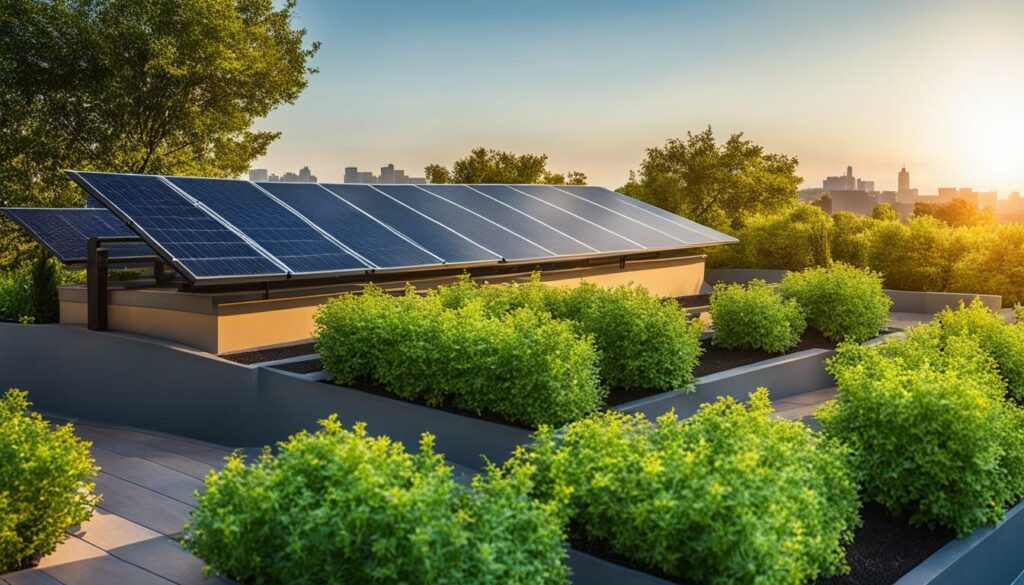
Understanding Tax Incentives for Energy-Efficient Roofs
Tax incentives for energy-efficient roofs provide financial rewards for homeowners who prioritize sustainability through their roof renovations. These incentives aim to encourage the adoption of energy-efficient practices and reduce the environmental impact of residential buildings. By taking advantage of these incentives, homeowners can not only save money but also contribute to a greener future.
One of the most significant tax incentives available for energy-efficient roofs is the sustainable roof tax credit. This credit allows homeowners to claim up to $3,200 for qualified energy-efficient improvements made between January 1, 2023, and 2032. The credit is equal to 30% of certain qualified expenses, including energy efficiency improvements, residential energy property expenses, and home energy audits.
| Qualified Expenses for the Tax Credit | Maximum Annual Credit |
|---|---|
| Exterior doors, windows, insulation, air sealing materials | $1,200 for energy property costs and certain home improvements |
| Home energy audits, central air conditioners, water heaters, furnaces, heat pumps |
To qualify for these tax incentives, certain conditions must be met. The home must be located in the United States and serve as the primary residence of the homeowner. It should also be an existing home that is improved or added onto. However, it’s important to note that business use of the home may affect the eligibility for these credits.
When claiming the energy efficient home improvement credit, homeowners must file Form 5695 along with their tax return. This form ensures that the tax credit is properly applied and maximizes the benefits of energy-efficient roof renovations. By following the necessary steps, homeowners can make the most of these tax incentives while promoting sustainable living.
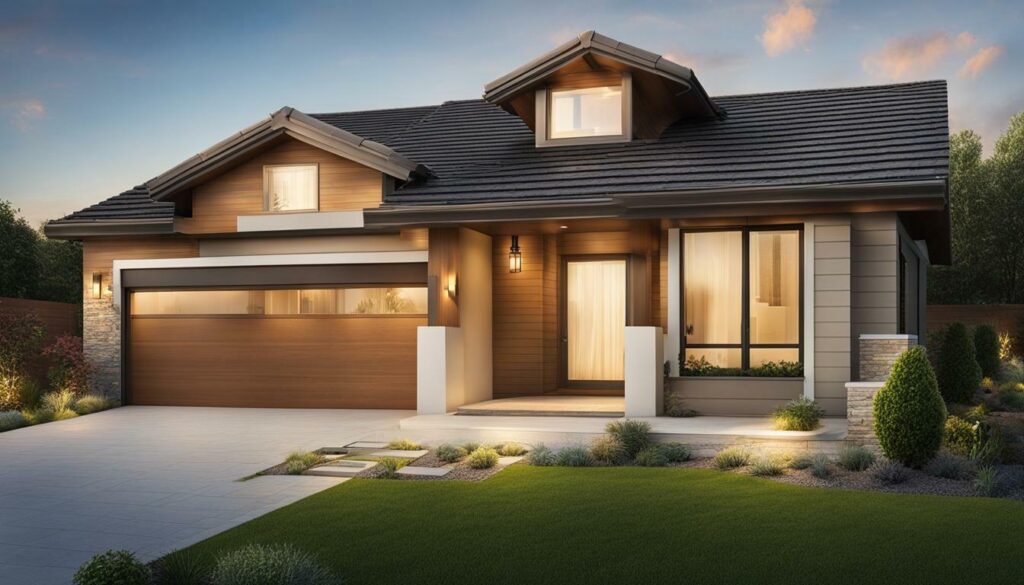
Taking advantage of tax incentives for energy-efficient roofs not only provides financial benefits but also helps homeowners contribute to a more eco-friendly world. By investing in energy-efficient improvements, homeowners can significantly reduce their energy consumption and lower their utility costs. Moreover, these eco-friendly practices can enhance the comfort and value of their property. So, if you’re considering a roof renovation, don’t miss out on the opportunity to maximize your savings and make a positive impact on the environment.
Maximizing Savings with Energy-Saving Roof Tax Credits
Energy-saving roof tax credits empower homeowners to reduce their environmental footprint while maximizing their savings on energy expenses. By taking advantage of these tax credits, homeowners can make energy-efficient improvements to their roofs and qualify for financial incentives.
The tax credit for energy-efficient roofs allows homeowners to claim up to $3,200 for qualified improvements made between January 1, 2023, and 2032. This credit equals 30% of certain qualified expenses, including energy efficiency improvements, residential energy property expenses, and home energy audits.
To qualify for the credit, the home must be located in the United States, an existing home that is improved or added onto, and the primary residence of the homeowner. However, it’s important to note that business use of the home may affect the credit eligibility.
Qualified expenses for the credit include exterior doors, windows, insulation, air sealing materials, home energy audits, central air conditioners, water heaters, furnaces, and heat pumps. It’s worth mentioning that subsidies, rebates, and incentives received for the energy-efficient improvements may need to be subtracted from the qualified expenses.
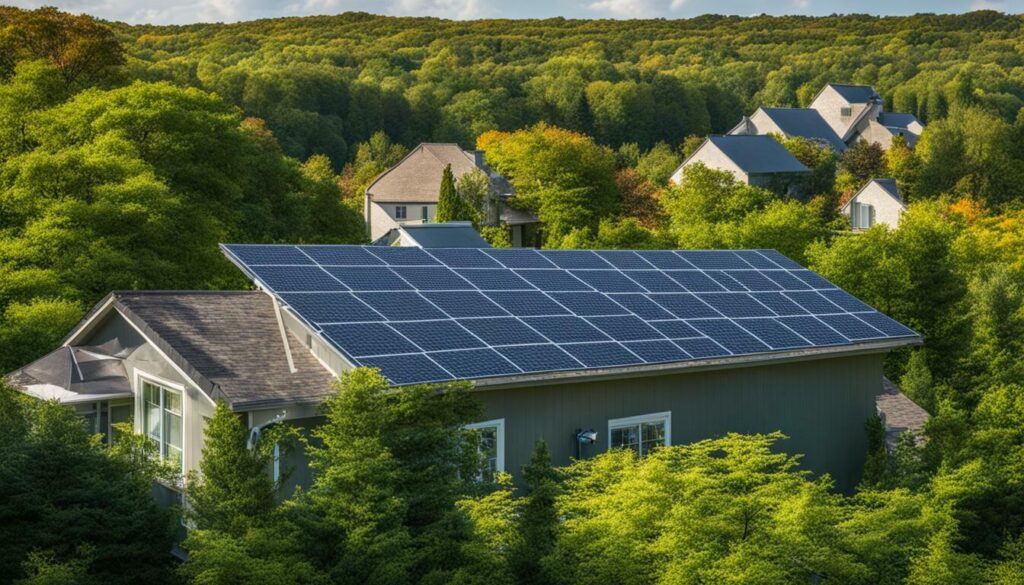
To claim the energy-efficient home improvement credit, homeowners must file Form 5695 with their tax return. This will ensure that they receive the benefits of the tax credit and maximize their savings. By investing in energy-efficient roofing solutions and taking advantage of the available tax credits, homeowners can not only save money but also contribute to a more sustainable future.
| Qualified Expenses | Maximum Annual Credit |
|---|---|
| Exterior doors, windows, insulation, air sealing materials | $1,200 |
| Home energy audits | $1,200 |
| Central air conditioners, water heaters, furnaces, heat pumps | $1,200 |
By making energy-saving improvements to their roofs and leveraging the available tax credits, homeowners can enjoy significant savings on energy expenses while also making a positive impact on the environment. It’s a win-win situation that benefits both their wallets and the planet.
Qualifying for the Federal Tax Credit for Energy-Efficient Roofs
To benefit from the federal tax credit for energy-efficient roofs, homeowners must meet specific requirements and undertake qualified energy-efficient improvements. The tax credit allows homeowners to claim up to $3,200 for qualified energy-efficient improvements made between January 1, 2023, and 2032. The credit equals 30% of certain qualified expenses, including energy efficiency improvements, residential energy property expenses, and home energy audits.
There are annual and lifetime limits for the credit, with the maximum annual credit being $1,200 for energy property costs and certain home improvements. The credit is nonrefundable, so it cannot exceed the amount owed in taxes. It’s important to note that to qualify for the credit, the home must be located in the United States, an existing home that is improved or added onto, and the primary residence of the homeowner. Business use of the home may affect the credit eligibility.
Qualified expenses for the credit include exterior doors, windows, insulation, air sealing materials, home energy audits, central air conditioners, water heaters, furnaces, and heat pumps. It’s worth mentioning that subsidies, rebates, and incentives received for the energy-efficient improvements may need to be subtracted from the qualified expenses.
Example of Qualified Expenses for the Tax Credit:
| Qualified Expenses | Maximum Credit Amount |
|---|---|
| Central Air Conditioner | $1,200 |
| Water Heater | $300 |
| Furnace | $150 |
| Windows and Doors | $200 |
To claim the energy efficient home improvement credit, homeowners must file Form 5695 with their tax return. It’s recommended to consult with a tax professional or review the IRS guidelines to ensure accurate filing and maximize the benefits of the tax credit. Overall, taking advantage of tax credits for energy-efficient roofs can lead to significant savings for homeowners while also promoting eco-friendly practices.
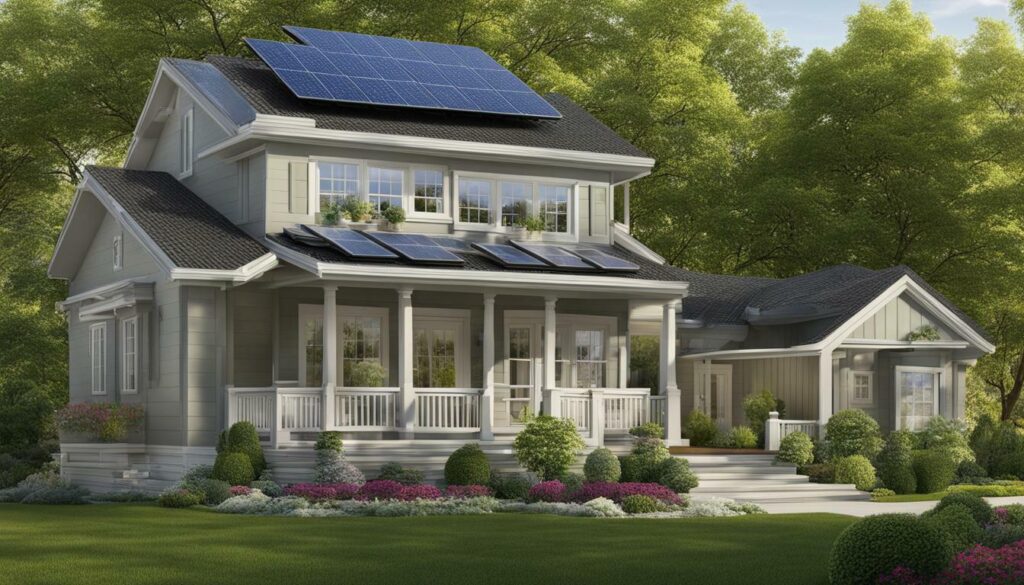
Understanding Qualified Expenses for the Tax Credit
Qualified expenses for the tax credit include a wide range of energy-efficient improvements, from insulation and air sealing materials to appliances like central air conditioners and water heaters. These expenses play a crucial role in maximizing the savings homeowners can enjoy through tax credits for energy-efficient roofs.
When it comes to energy efficiency improvements, investing in insulation and air sealing materials can make a significant difference. Proper insulation helps to regulate indoor temperatures, reducing the need for excessive heating or cooling. Air sealing materials, such as weatherstripping and caulking, prevent drafts and air leaks, further enhancing energy efficiency.
In addition to insulation and air sealing, upgrading appliances to energy-efficient options can also contribute to qualifying expenses. Central air conditioners, for example, consume less energy compared to traditional units while delivering optimal cooling performance. Water heaters and heat pumps, both known for their energy efficiency, are also eligible expenses for the tax credit.
| Qualified Expenses for Tax Credit | Examples |
|---|---|
| Insulation | Fiberglass batts, spray foam insulation |
| Air Sealing Materials | Weatherstripping, caulking |
| Central Air Conditioners | ENERGY STAR-certified units |
| Water Heaters | Tankless, heat pump water heaters |
| Heat Pumps | Air-source, geothermal heat pumps |
It’s important to note that subsidies, rebates, and other incentives received for energy-efficient improvements may need to be subtracted from the qualified expenses. However, even with potential adjustments, the tax credit can still lead to significant savings for homeowners.
By taking advantage of the tax credits for energy-efficient roofs and making qualified expenses, homeowners have the opportunity to maximize their savings while promoting environmentally friendly practices. Investing in energy efficiency not only reduces utility costs but also contributes to a more sustainable future.
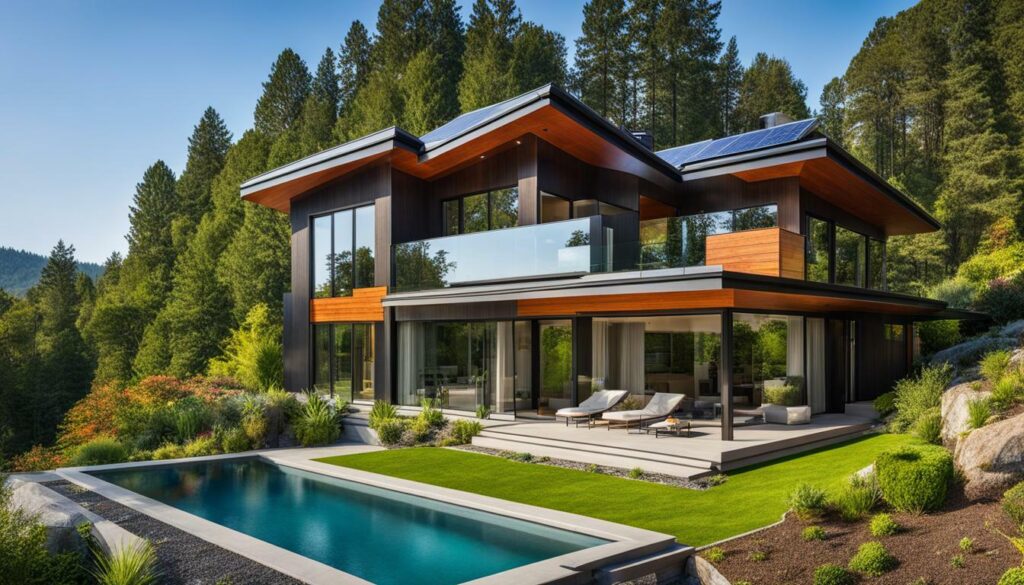
Limits and Considerations for the Energy Efficient Home Improvement Credit
While the energy-efficient home improvement credit provides significant savings, there are important limits and considerations to be aware of. The credit allows homeowners to claim up to $3,200 for qualified energy-efficient improvements made between January 1, 2023, and 2032. However, there are annual and lifetime limits for the credit.
The maximum annual credit for energy property costs and certain home improvements is $1,200. This means that if you spend more than $4,000 on qualified expenses in a single year, you will only be able to claim a maximum of $1,200 as a credit. It’s essential to plan your improvements and expenses accordingly to maximize the benefits of the credit.
It’s also important to note that the energy-efficient home improvement credit is nonrefundable. This means that the credit cannot exceed the amount owed in taxes. For example, if your tax liability is $800 and you qualify for a $1,200 credit, you will only be able to claim $800. The remaining $400 cannot be refunded to you.

To take advantage of the credit, your home must be located in the United States, an existing home that is improved or added onto, and your primary residence. If you use your home for business purposes, it may affect your eligibility for the credit, so it’s crucial to consult with a tax professional to ensure compliance.
Qualified expenses for the credit include a wide range of energy-efficient improvements, such as exterior doors, windows, insulation, air sealing materials, home energy audits, and more. However, it’s important to subtract any subsidies, rebates, or incentives received for these improvements from the qualified expenses when claiming the credit.
| Qualified Expenses | Maximum Credit |
|---|---|
| Exterior doors, windows, insulation, air sealing materials | $1,200 |
| Home energy audits | $300 |
| Central air conditioners, water heaters, furnaces, heat pumps | $1,200 |
To claim the energy-efficient home improvement credit, you must file Form 5695 with your tax return. This form will require you to provide details about your qualified expenses and calculate the credit amount accordingly. It’s essential to keep records and receipts of your expenses to support your claim in case of an audit.
In conclusion, while tax credits for energy-efficient roofs offer significant savings for homeowners, it’s crucial to be aware of the limits and considerations associated with these credits. Understanding the annual and lifetime limits, the nonrefundable nature of the credit, and the qualified expenses will help you plan your home improvements and maximize the benefits of the credit. By taking advantage of this opportunity, you can not only save money but also contribute to a more eco-friendly and sustainable future.
Claiming the Energy Efficient Home Improvement Credit
Homeowners can claim the energy-efficient home improvement credit by following the specific procedures outlined by the IRS, including filing Form 5695. This form is used to calculate and claim the residential energy-efficient property credit. It requires homeowners to provide details about their qualified energy-efficient improvements and expenses, ensuring that they meet the eligibility criteria.
When filling out Form 5695, homeowners should accurately report their qualified expenses for the tax credit. These expenses include a wide range of energy-saving upgrades such as exterior doors, windows, insulation, air sealing materials, and home energy audits. Additionally, central air conditioners, water heaters, furnaces, and heat pumps may also be eligible expenses. It’s important to note that any subsidies, rebates, or incentives received for these energy-efficient improvements may need to be subtracted from the qualified expenses.
Once the form is complete, homeowners can include it with their annual tax return, submitting it to the IRS for processing. It’s crucial to ensure that all information provided is accurate and supported by relevant documentation. Failing to properly claim the energy efficient home improvement credit may result in delays or denials, potentially causing homeowners to miss out on significant savings.
By claiming the energy-efficient home improvement credit, homeowners can maximize savings while promoting eco-friendly practices. This tax credit not only helps reduce overall tax liability but also encourages investments in energy efficiency, benefiting both individuals and the environment. Taking advantage of this credit enables homeowners to make valuable improvements to their properties while enjoying the financial advantages provided by the government.
| Qualified Expenses for the Tax Credit | Maximum Annual Credit | Nonrefundable Credit |
|---|---|---|
| Exterior doors | $1,200 | Energy efficiency improvements |
| Windows | $1,200 | Residential energy property expenses |
| Insulation | $1,200 | Home energy audits |
| Air sealing materials | $1,200 | Central air conditioners |
| Home energy audits | $1,200 | Water heaters |
| Central air conditioners | $1,200 | Furnaces |
| Water heaters | $1,200 | Heat pumps |
The Benefits of Tax Credits for Energy-Efficient Roofs
By taking advantage of tax credits for energy-efficient roofs, homeowners can not only achieve substantial savings but also contribute to a more sustainable future. The tax credit allows homeowners to claim up to $3,200 for qualified energy-efficient improvements made between January 1, 2023, and 2032. This credit equals 30% of certain qualified expenses, including energy efficiency improvements, residential energy property expenses, and home energy audits.
There are annual and lifetime limits for the credit, with the maximum annual credit being $1,200 for energy property costs and certain home improvements. It is important to note that the credit is nonrefundable, meaning it cannot exceed the amount owed in taxes. To qualify for the credit, the home must be located in the United States, an existing home that is improved or added onto, and the primary residence of the homeowner. However, keep in mind that business use of the home may affect the credit eligibility.
| Qualified Expenses for the Credit | Examples |
|---|---|
| Exterior Doors, Windows, Insulation | Upgrade to energy-efficient doors and windows, add insulation to improve energy efficiency. |
| Air Sealing Materials | Seal air leaks around windows, doors, and other areas to reduce energy consumption. |
| Home Energy Audits | Hire a professional to conduct a comprehensive energy audit of your home. |
| Central Air Conditioners, Water Heaters, Furnaces, and Heat Pumps | Invest in energy-efficient HVAC systems and water heaters to reduce energy usage. |
It’s important to note that subsidies, rebates, and incentives received for the energy-efficient improvements may need to be subtracted from the qualified expenses. To claim the energy-efficient home improvement credit, homeowners must file Form 5695 with their tax return. By making energy-efficient choices and taking advantage of the available tax credits, homeowners can not only save money in the long run but also contribute to a more sustainable and eco-friendly lifestyle.
Image Related to the Benefits of Tax Credits for Energy-Efficient Roofs:
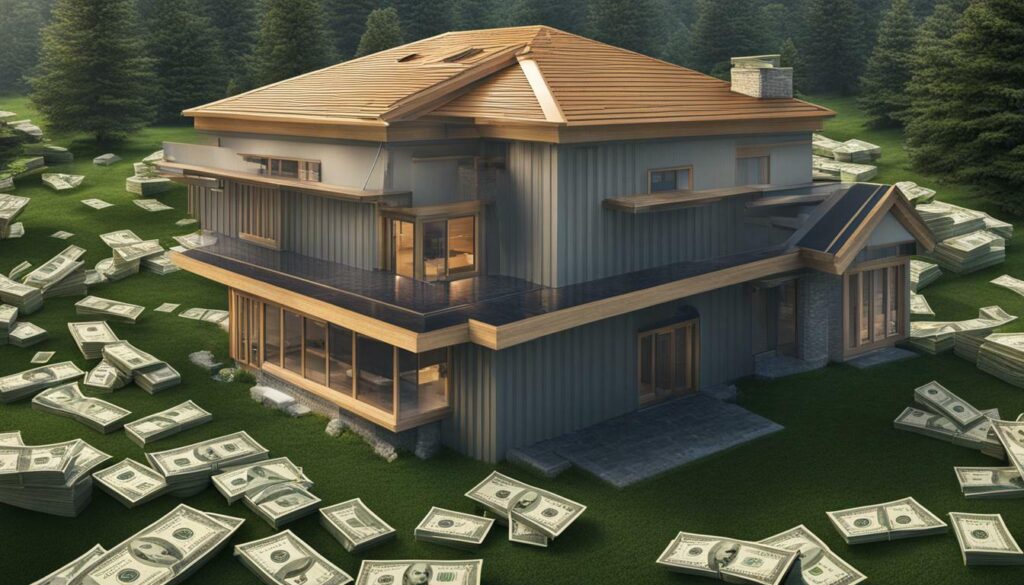
“By maximizing energy efficiency and reducing energy consumption, homeowners can significantly lower their utility bills and enjoy long-term cost savings.”
Conclusion
Tax credits for energy-efficient roofs provide a win-win situation for homeowners, promoting cost savings and a more sustainable future. By taking advantage of these tax incentives, homeowners can maximize their savings while making environmentally conscious choices for their homes.
Under the federal tax credit for energy-efficient roofs, homeowners can claim up to $3,200 for qualified energy-efficient improvements made between January 1, 2023, and 2032. This credit equals 30% of certain qualified expenses, including energy efficiency improvements, residential energy property expenses, and home energy audits.
It’s important to note that there are annual and lifetime limits for the credit. The maximum annual credit is $1,200 for energy property costs and certain home improvements. However, it’s crucial to remember that the credit is nonrefundable, meaning it cannot exceed the amount owed in taxes.
To qualify for the credit, the home must be located in the United States and serve as the primary residence of the homeowner. It should be an existing home that has been improved or added onto. It’s essential to consider that the use of the home for business purposes may affect the credit eligibility.
Qualified expenses for the tax credit include exterior doors, windows, insulation, air sealing materials, home energy audits, central air conditioners, water heaters, furnaces, and heat pumps. However, it’s important to note that subsidies, rebates, and incentives received for the energy-efficient improvements may need to be subtracted from the qualified expenses.
To claim the energy-efficient home improvement credit, homeowners must file Form 5695 along with their tax return. By following the necessary steps, homeowners can ensure a smooth claim process and enjoy the benefits of these tax credits.
Overall, tax credits for energy-efficient roofs offer homeowners significant savings while promoting eco-friendly practices. By investing in energy efficiency and taking advantage of these credits, homeowners can make a positive impact on both their finances and the environment.
FAQ
Q: What is the maximum amount homeowners can claim for energy-efficient improvements?
A: Homeowners can claim up to $3,200 for qualified energy-efficient improvements made between January 1, 2023, and 2032.
Q: What expenses qualify for the tax credit?
A: Qualified expenses include exterior doors, windows, insulation, air sealing materials, home energy audits, central air conditioners, water heaters, furnaces, and heat pumps.
Q: Are there any limits to the tax credit?
A: Yes, there are annual and lifetime limits for the credit. The maximum annual credit is $1,200 for energy property costs and certain home improvements.
Q: Can the tax credit be refunded if it exceeds the amount owed in taxes?
A: No, the tax credit is nonrefundable and cannot exceed the amount owed in taxes.
Q: How can homeowners claim the energy-efficient home improvement credit?
A: Homeowners must file Form 5695 with their tax return to claim the energy-efficient home improvement credit.
Q: What are the eligibility criteria for the tax credit?
A: To qualify for the credit, the home must be located in the United States, an existing home that is improved or added onto, and the primary residence of the homeowner. Business use of the home may affect the credit eligibility.
Q: Do subsidies, rebates, and incentives received for energy-efficient improvements affect the qualified expenses?
A: Yes, subsidies, rebates, and incentives received may need to be subtracted from the qualified expenses when claiming the tax credit.
Source Links
- https://www.kiplinger.com/taxes/605069/inflation-reduction-act-tax-credits-energy-efficient-home-improvements
- https://www.irs.gov/newsroom/energy-incentives-for-individuals-residential-property-updated-questions-and-answers
- https://www.irs.gov/credits-deductions/energy-efficient-home-improvement-credit
